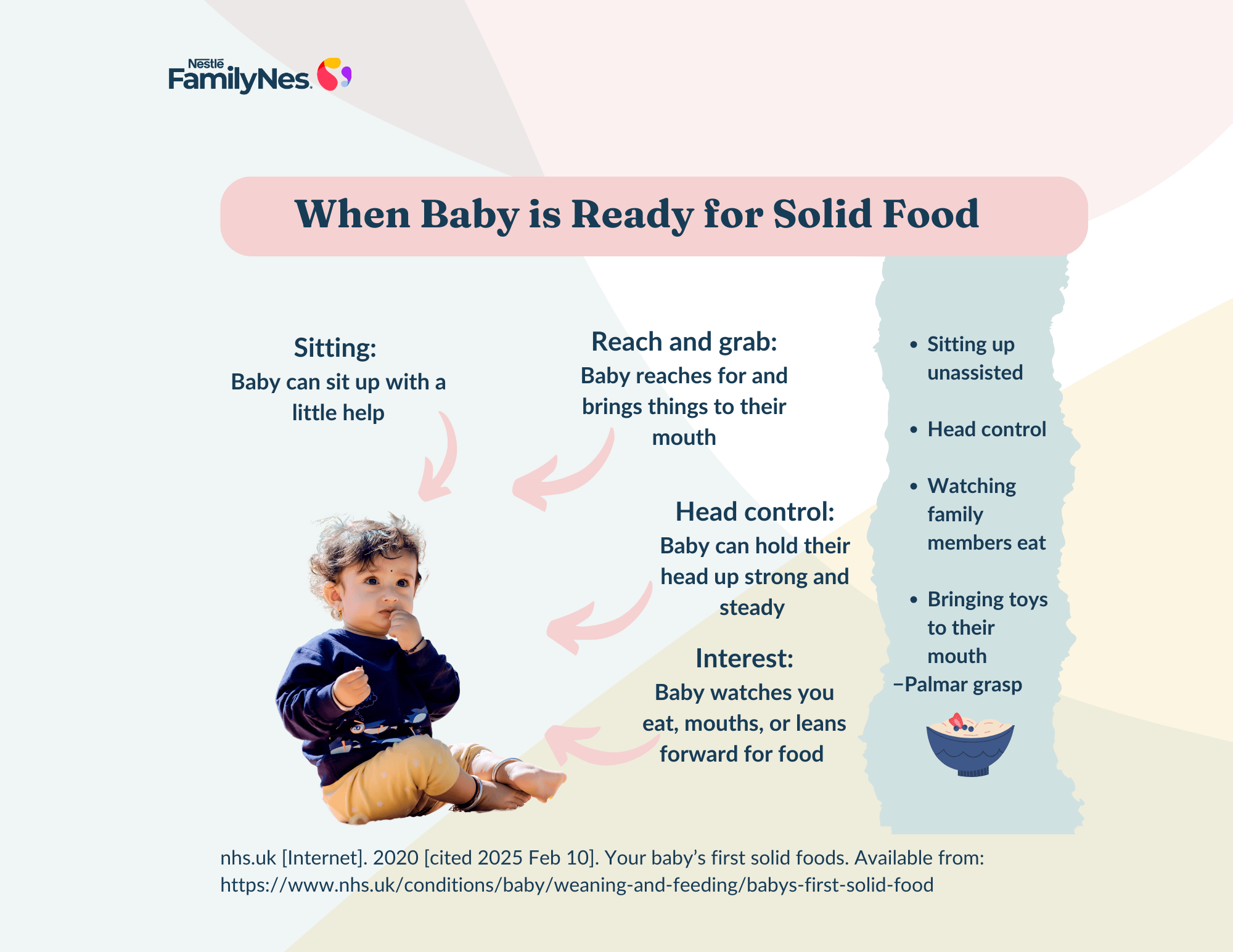
Introducing different food textures is an exciting part of your baby’s feeding journey, especially between 6–8 months, when they’re ready to explore more than breast milk. Your baby’s jaw and mouth develop during this period, enabling them to eat thicker purees like mashed dal, rice, and rice pudding (kheer).(1)
You can let your child touch, squish, and even play with their food. Yes, it can be messy, but it helps them build chewing and self-feeding skills. Introducing a variety of textures early can greatly reduce babies' resistance toward trying different foods as they grow older.(2)
Different textures are critical for the development of:
- Oral motor skills, including
- Cheek muscle strengthening
- Tongue movement
- Jaw coordination
It has been proven that early feeding experiences aid in promoting oral-motor control, which is critical for later speech and language development.(3) Repetitive chewing of textured food builds the muscle involved in talking. Dealing with various textures enables babies to establish muscle control in their mouth which serves as a solid foundation for future communication skills.

1. Start with Smooth then Move to Coarser Thicker Purees
You can begin with smooth purees and gradually make them coarser by mashing and adding soft fruit and cooked mashed vegetables. This enables the baby to get accustomed to various textures.(4)
2. Soft Finger Foods for Tiny Hands
Around 8-10 months, when your baby shows interest in self-feeding, you can introduce soft chapati pieces, boiled sweet potato, steamed apple, or mashed banana. These foods are easy to grip and encourage hand-eye coordination as your baby mashes them with their gums.
3. Mix Textures in One Meal
You can provide new textures to your baby in a familiar context by mixing different textures in one meal, like khichdi, cooked, soft dices of vegetables, upma with well cooked vegetables, dalia etc, will ease your baby into more complex food.(5)
4. Introduce a Variety of Grains
Introducing multiple grains like ragi, oats, and rice, wheat in 1 meal into your baby's diet. Each grain has a different consistency that will create a texture experience for your baby.
5. Play with Cooking Methods
You can use different cooking methods to change the texture and taste of food. Instead of always steaming, try mashing, roasting, or sauteing vegetables to give your baby new experiences to the senses. (6)
6. Different Temperatures, Different Experiences
Offer lukewarm dal, room temperature fruit puree, or slightly chilled yogurt to give your baby varied eating experiences.(7)
7. Encourage Baby-Led Tasting
You can also offer safe foods to touch, squish, and taste at their own pace. Sure, it'll get messy. But that's the point of learning!
8. Make Mealtime Fun and Engaging
Babies learn by watching, so eat together! Show them how you enjoy food. Let them see the different textures on your plate, and don't forget to include fun in the experience!
Texture introduction enhances a baby's eating and chewing skills:
- Proceed from soft to hard foods
- Watch your baby's cues
- Enjoy the fun of mealtimes together!
Ready to explore new textures with your baby? Comment below your go-to mealtime tips or questions. Let’s learn and grow together!
References
- Palladino RRR, Cunha MC, Souza LA de P. Problemas de linguagem e alimentares em crianças: co-ocorrências ou coincidências? Pró-Fono R Atual Cient. 2007 Jun;19:205–14.
- Michaelsen KF. Feeding and Nutrition of Infants and Young Children: Guidelines for the WHO European Region, with Emphasis on the Former Soviet Countries. WHO Regional Office Europe; 2000. 296 p.
- Wilson EM, Green JR, Yunusova YY, Moore CA. Task Specificity in Early Oral Motor Development. Semin Speech Lang. 2008 Nov;29(4):257–66.
- Texture Consumption Patterns of 8- to 12-Month-Old Infants: A Reflection of Typical Feeding Development | American Journal of Speech-Language Pathology [Internet]. [cited 2025 Jan 29]. Available from: https://pubs.asha.org/doi/10.1044/2021_AJSLP-21-00048
- Tournier C, Demonteil L, Ksiazek E, Marduel A, Weenen H, Nicklaus S. Factors Associated With Food Texture Acceptance in 4- to 36-Month-Old French Children: Findings From a Survey Study. Front Nutr [Internet]. 2021 Feb 1 [cited 2025 Jan 29];7. Available from: https://www.frontiersin.org/journals/nutrition/articles/10.3389/fnut.2020.616484/full
- Exposure to texture of foods for 8‐month‐old infants: Does the size of the pieces matter? - da Costa - 2017 - Journal of Texture Studies - Wiley Online Library [Internet]. [cited 2025 Jan 29]. Available from: https://onlinelibrary.wiley.com/doi/10.1111/jtxs.12271
- Kuo AA, Inkelas M, Slusser WM, Maidenberg M, Halfon N. Introduction of Solid Food to Young Infants. Matern Child Health J. 2011 Nov 1;15(8):1185–94.
Other Related Topics




